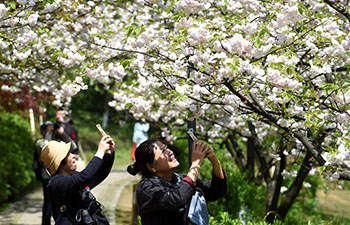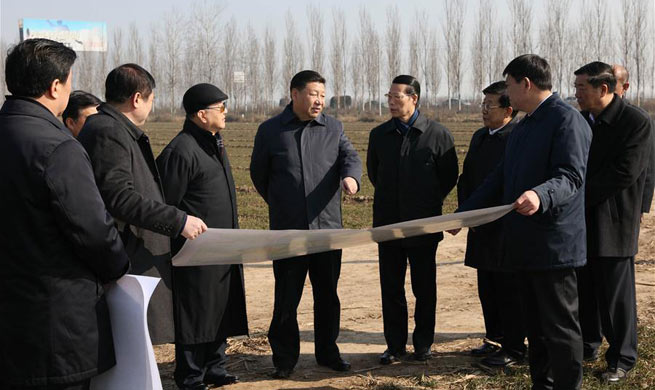BEIJING, April 14 (Xinhua) -- China will raise the basic pension in 2017, the 13th straight year it had done so, but at a slower pace amid pressure from the economic slowdown and the aging population.
Starting from the beginning of this year, the average monthly payment for retirees from enterprises, government agencies and public institutions was lifted by 5.5 percent from 2016 levels, according to a circular issued by the Ministry of Human Resources and Social Security (MOHRSS) and the Ministry of Finance on Friday.
The increase, set to benefit 106 million retirees across China, was milder than the 6.5-percent pension rise last year.
Authorities attributed the slower increase to moderating economic growth and a rapidly aging society, which result in a heavier burden on the pension funds.
China raised pensions by at least 10 percent annually during the 2005-2015 period before the pace slackened in 2016.
From 2005 to 2016, the average monthly pension payment for enterprise retirees went up to 2,400 yuan (348.5 U.S. dollars) from around 640 yuan, official data showed.
This year's 5.5-percent pension rise was "reasonable," said Jin Weigang, head of the social security research institute under the MOHRSS, who cited slower salary and GDP growth.
The average salary level of employees grew by about 6.3 percent year on year in the first three quarters of last year, while China's annual GDP growth stood at 6.7 percent in 2016, both slowing from a year earlier, he said.
The 5.5-percent increase in pensions also outpaced the 2-percent growth in the consumer price index, a main gauge of inflation, last year.
However, for many retirees, pensions are still far from satisfying.
"Though my pension has increased each year, so has the price of meat, oil and vegetables," said Li Guoli, a retiree of a privately-owned enterprise in central China's Wuhan city. "With my expenses going up, I have little money left to spare."
An internationally accepted rule of thumb assumes that retirees can continue the same standard of living as before their retirement if their pension incomes reach around 70 percent of pre-retirement wages. Life quality drops significantly if that ratio falls below 50 percent.
Jin estimated the ratio, namely the replacement ratio, was 67 percent in China in 2014. Chu Fuling, another social security researcher, with the Central University of Finance and Economics, on the other hand put the figure at below 50 percent for the same year.
Concerns about pensions have increased as the population ages. Seven provincial-level regions saw pension fund deficits last year.
The government estimates that the number of people aged over 60 in China will reach 255 million, 17.8 percent of the country's total population, by 2020.
Xiang Yunhua, a professor at Wuhan University, suggested that state capital could be used to replenish the nation's social security coffers and expand fiscal input to address pension funds shortage.
Work should also be expedited to increase the value of locally managed pension funds by giving more latitude to their investment, Xiang said.
Those pensions are traditionally held by banks or used to purchase treasury bills in China. They are now allowed to be invested in a variety of financial products, including bonds and stocks.
Since the end of 2016, seven provincial-level regions have entrusted their pensions to the National Council for Social Security Fund in the hope of more diverse investment and higher returns, authorities said last month.

















